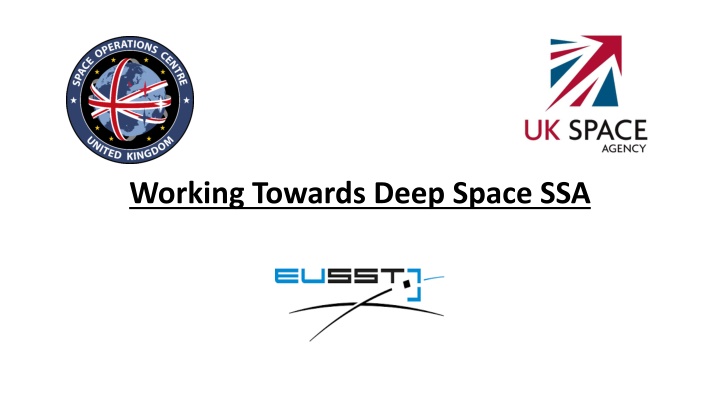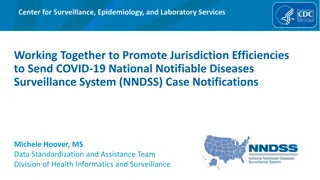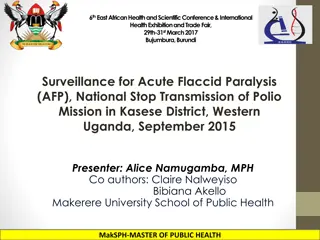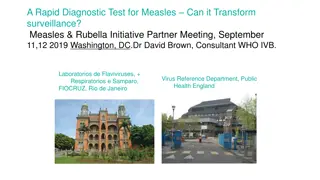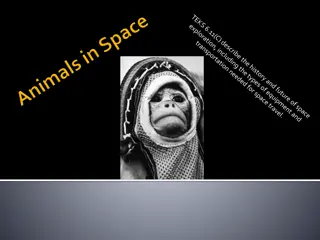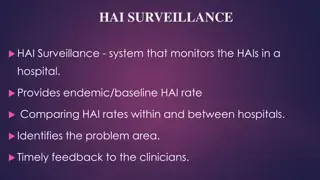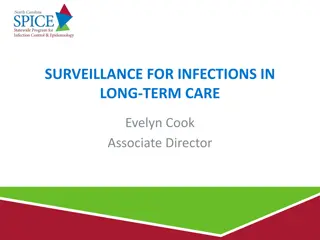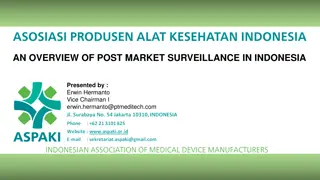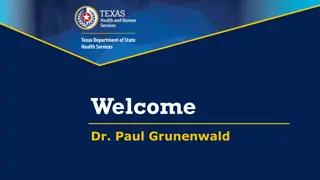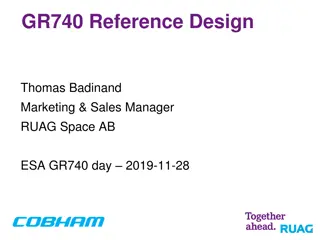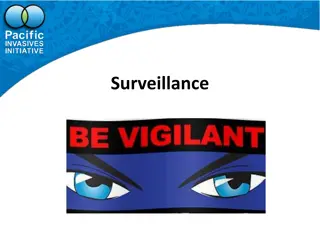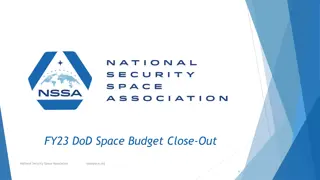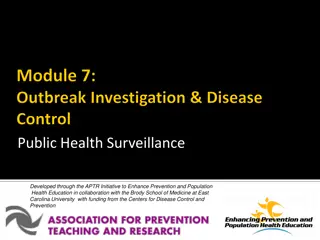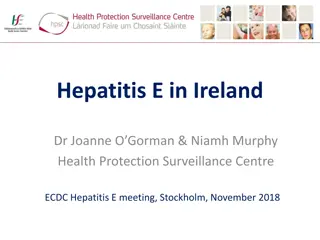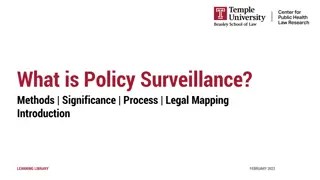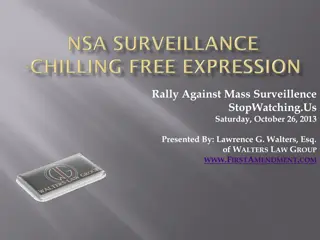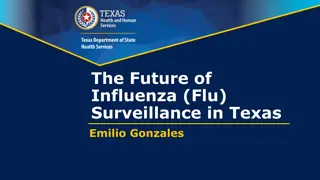European Deep Space Surveillance and Tracking Collaboration
EU Space Surveillance and Tracking program involves five European nations collaborating to assess and reduce risks to European spacecraft, provide early warnings for re-entries and space debris, and prevent space debris proliferation. Available deep space sensors, such as optical telescopes, are utilized to enhance global deep space SSA. Deep space interests include monitoring communication satellites, Galileo GNSS program, and maintaining safety for payloads in Geo graveyard orbits and Highly Elliptical Orbits. Data receipt and ingestion involve tasking UK sensors through standing and dynamic event-based lists.
Uploaded on Sep 08, 2024 | 2 Views
Download Presentation

Please find below an Image/Link to download the presentation.
The content on the website is provided AS IS for your information and personal use only. It may not be sold, licensed, or shared on other websites without obtaining consent from the author.If you encounter any issues during the download, it is possible that the publisher has removed the file from their server.
You are allowed to download the files provided on this website for personal or commercial use, subject to the condition that they are used lawfully. All files are the property of their respective owners.
The content on the website is provided AS IS for your information and personal use only. It may not be sold, licensed, or shared on other websites without obtaining consent from the author.
E N D
Presentation Transcript
Scope EU Space Surveillance and Tracking Available Deep Space Sensors Deep Space Interests Data Receipt and Ingestion Where From Here?
EU Space Surveillance and Tracking Collaboration of five European nations: UK, Germany, France, Spain and Italy Funded by Galileo, Copernicus and Horizon 2020 programmes Mission: To help project European and national space infrastructure, facilities and services by: o Assessing and reducing the risks to in-orbit operations of European spacecraft from collisions o Reducing the risks relating to the launch of European spacecraft o Surveying and providing early warning of uncontrolled re-entries of spacecraft or space debris o Seeking to prevent the proliferation of space debris Services provided: Conjunction analysis and warning, re-entry and fragmentation warning Potential users: Satellite owner/operators, governmental entities such as civil protection offices in EU member states and the European Commission, as well as catalogue providers.
Available Deep Space Sensors UK DS sensors: Starbrook: Ground based optical telescope, owned by Space Insight and located in Cyprus. NERC Space Geodesy Facility: Ground based optical telescope, located near Herstmonceux, East Sussex. EUSST DS sensors: Spain: 11 Italy: 3 France: 3 Through collaboration the EUSST member states aim to enhance global deep space SSA and burden share with the US, through general object tracking, fragmentation and conjunction analysis services.
Deep Space Interests SKYNET: The communication satellite constellation is a vital aspect of UK MOD and NATO armed forces operations, making the constant monitoring of these payloads crucial. Galileo GNSS: As a key EU programme, the successful deployment and ongoing operations of the Galileo GNSS is critical. Geo graveyard objects: The perturbation of objects re-positioned in to a Geo graveyard orbit eventually pose serious risks to active Geo payloads. Highly Elliptical Orbits (HEO s): Ensuring a safe passage for both HEO s and Geostationary Transfer Orbits (GTO S) which are inherently difficult to track/observe/determine through regular conjunction analysis and Orbit Determination.
Data Receipt and Ingestion Tasking of UK sensors: Tasking request sent direct from the UKSpOC to the sensor via e-mail. There are two forms of request, a standing tasking list and a dynamic event based tasking list. Track data from sensors: Tracking Data Message (TDM): CCSDS recommended standard. The TDM s are currently received by e-mail and ingested into a recently developed UK database located at the UKSpOC. This data can be used to calculate orbit determination. Ephemeris data from owner/operators: Used to enhance accuracy of an objects behaviour to aid tracking and orbit determination. Event alerts and Ephemeris from JSpOC/18th Space Control: Information/data such as fragmentation events and Conjunction Data Messages (CDM s) are received in to the UK SpOC and monitored through dedicated websites. Ephemeris data for a substantial portion of the Space Surveillance Catalogue can also be acquired.
Where from here? Evolution of services: Development of algorithms and software (DSTL DDM, UK re-entry tool) Collaboration with Academic institutions? Investigation of other EU SST member state capabilities Investigation of US capabilities Central C2 system: Nationally developed command and control suite to be located at UKSpOC, designed to: Perform intelligent multi-sensor tasking Receive, process and store raw track data/TDM s Calculate potential conjunction events Determine re-entry date, time and location Map and propagate fragmentation events Perform orbit determination using Special Perturbation data Identify and potentially predict manoeuvres Designed to operate in a multiple classification environment Our Aim: Enhance UK space capabilities and our involvement in global SSA UK SpOC to be the centre of National Space Operations by 2025
